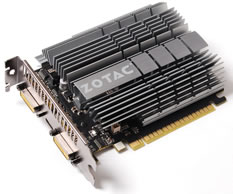
For a multi-screen PC the graphics card setup directly affects the type and number of monitors you can connect to the computer, each monitor needs its own monitor output.
Screen Resolutions
A screen resolution is basically the number of pixels it uses to display your computers output. Generally speaking the more pixels you have the more available space you have to display your programs and data.
More pixels also equals more work for the graphics cards though so it is important to understand what resolutions your screens run and what the capabilities of your graphics setup is.
A standard Full HD resolution uses 1920 pixels wide by 1080 high, whereas a QHD screen uses 2560 x 1440, this equates to 77% more pixels per screen.
A 4K resolution screen has a resolution of 3840 x 2160 which is exactly four times the resolution of 1 Full HD screen.
AI Workloads
AI tools and models run on graphics cards not on CPUs, a more powerful graphics card will speed up any type of AI work on your PC. Learn more about this here: AI Computing Performance
We list a TOPS score for each graphics option, the higher the score the better for performance.
Our Graphics Options
We use Intel and nVidia graphics cards, all options can support Full HD, QHD, & 4K monitors, however if you want to run more graphically intensive programs on a high number of QHD / 4K screens then we recommend the more powerful nVidia 4060 cards.
To be clear, you’d only need to consider opting for the nVidia 4060 or above if you were intending to run more graphically intensive workloads (like 4K video streams, or highly graphical charting packages) across 6 or more QHD’s or 4 or more 4K screens.
Less graphically intensive software (like internet, email, and desktop office based programs) are easily handled by the Intel options on both Full HD and QHD screens.
Upgrade Charges & Specific Output Information
Changing the graphics card option sometimes affects the rest of the PC build. Increasing the number of cards means that we upgrade the motherboard, power supply and case cooling to support them, the upgrade cost includes these additional changes.